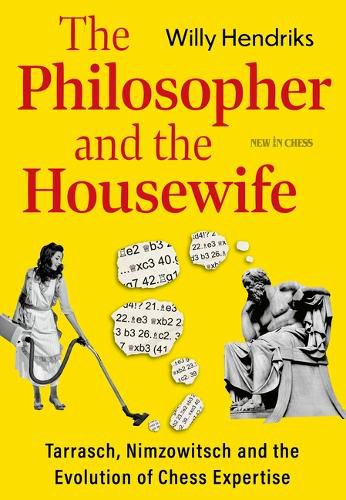Readings Newsletter
Become a Readings Member to make your shopping experience even easier.
Sign in or sign up for free!
You’re not far away from qualifying for FREE standard shipping within Australia
You’ve qualified for FREE standard shipping within Australia
The cart is loading…






Siegbert Tarrasch and Aron Nimzowitsch could be called the two vainest chess players in history. This book tells the fascinating story of their lifelong rivalry. They clashed as personalities, as players and as chess writers, both searching for the truth in chess, but with very different perspectives.
Tarrasch is seen as the dogmatic theorist and, according to Nimzowitsch, didn't offer much more than the well-meaning advice of a housewife. Nimzowitsch is the philosopher, the designer of a complete 'system' that explains everything there is to know about chess to future generations of students.
Does chess history treat these giants fairly or are they mere caricatures? And what was the role of the third protagonist in this debate, Semyon Alapin, whom Nimzowitsch condescendingly called 'an artist of variations'? These questions, and these different viewpoints, are at the heart of this in-depth investigation.
Hendriks offers a wonderful and often highly entertaining look at this great controversy. The many chess fragments nicely illustrate how our expertise has evolved in this turbulent period of chess history.
$9.00 standard shipping within Australia
FREE standard shipping within Australia for orders over $100.00
Express & International shipping calculated at checkout
Siegbert Tarrasch and Aron Nimzowitsch could be called the two vainest chess players in history. This book tells the fascinating story of their lifelong rivalry. They clashed as personalities, as players and as chess writers, both searching for the truth in chess, but with very different perspectives.
Tarrasch is seen as the dogmatic theorist and, according to Nimzowitsch, didn't offer much more than the well-meaning advice of a housewife. Nimzowitsch is the philosopher, the designer of a complete 'system' that explains everything there is to know about chess to future generations of students.
Does chess history treat these giants fairly or are they mere caricatures? And what was the role of the third protagonist in this debate, Semyon Alapin, whom Nimzowitsch condescendingly called 'an artist of variations'? These questions, and these different viewpoints, are at the heart of this in-depth investigation.
Hendriks offers a wonderful and often highly entertaining look at this great controversy. The many chess fragments nicely illustrate how our expertise has evolved in this turbulent period of chess history.